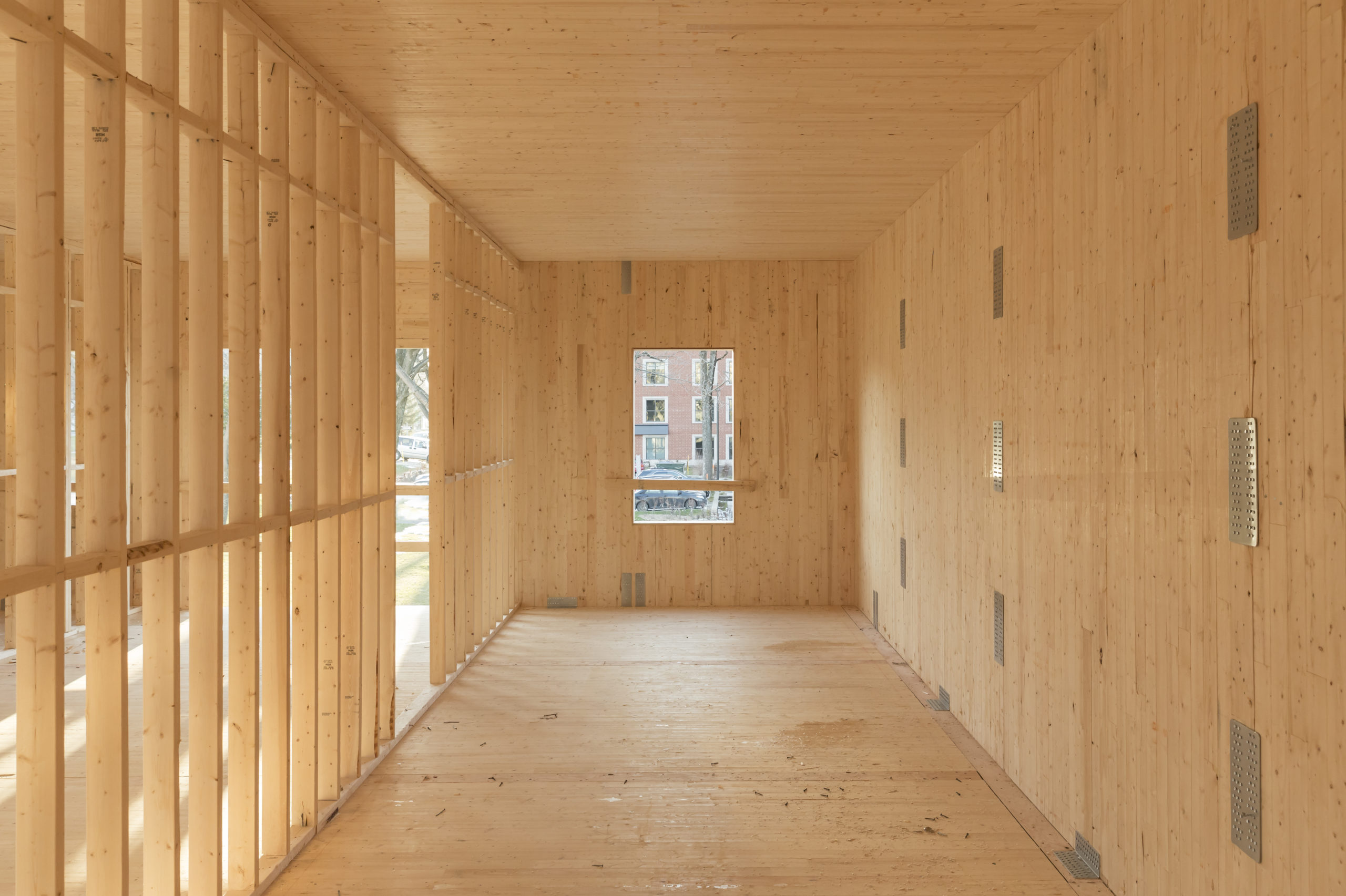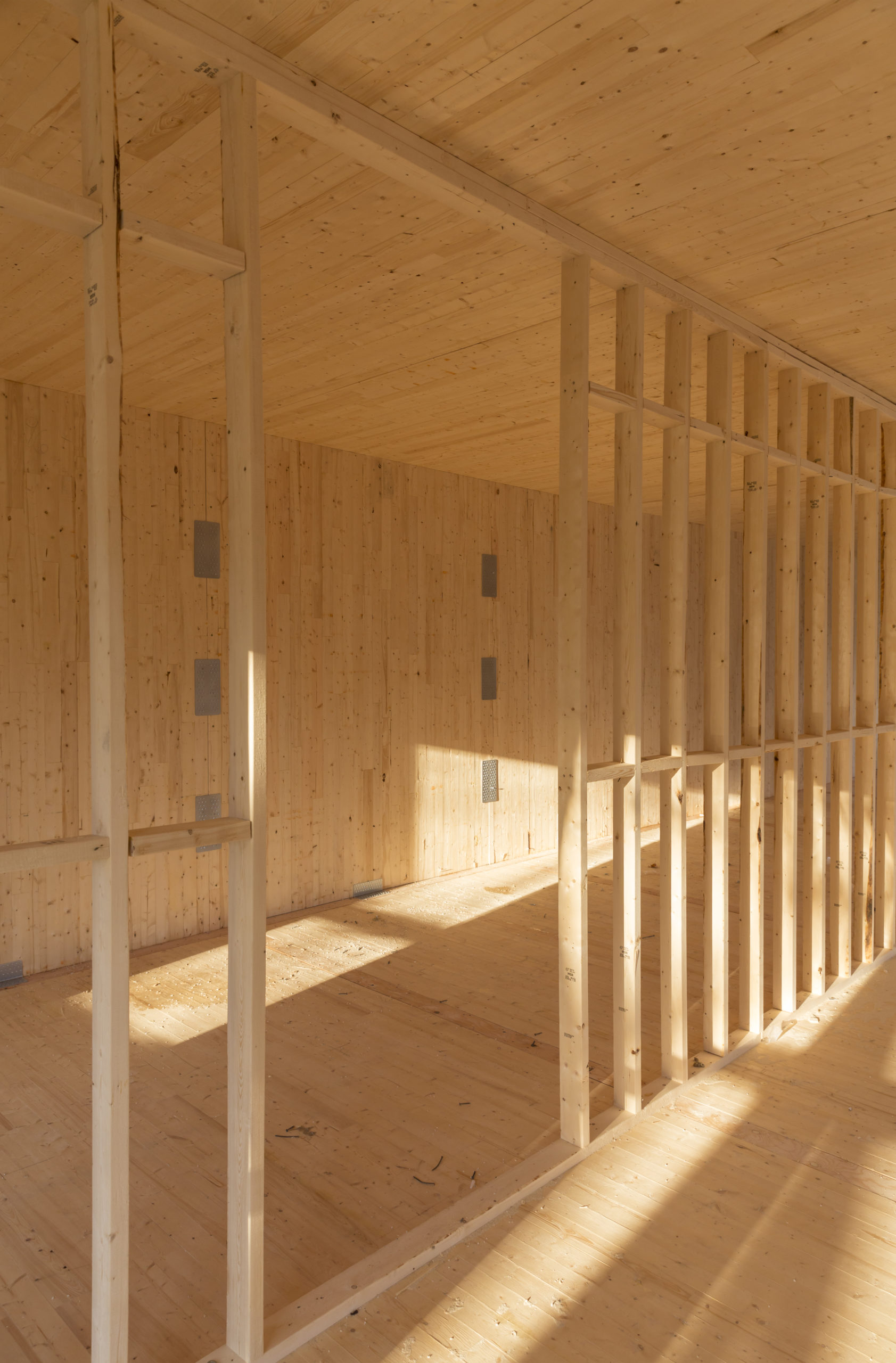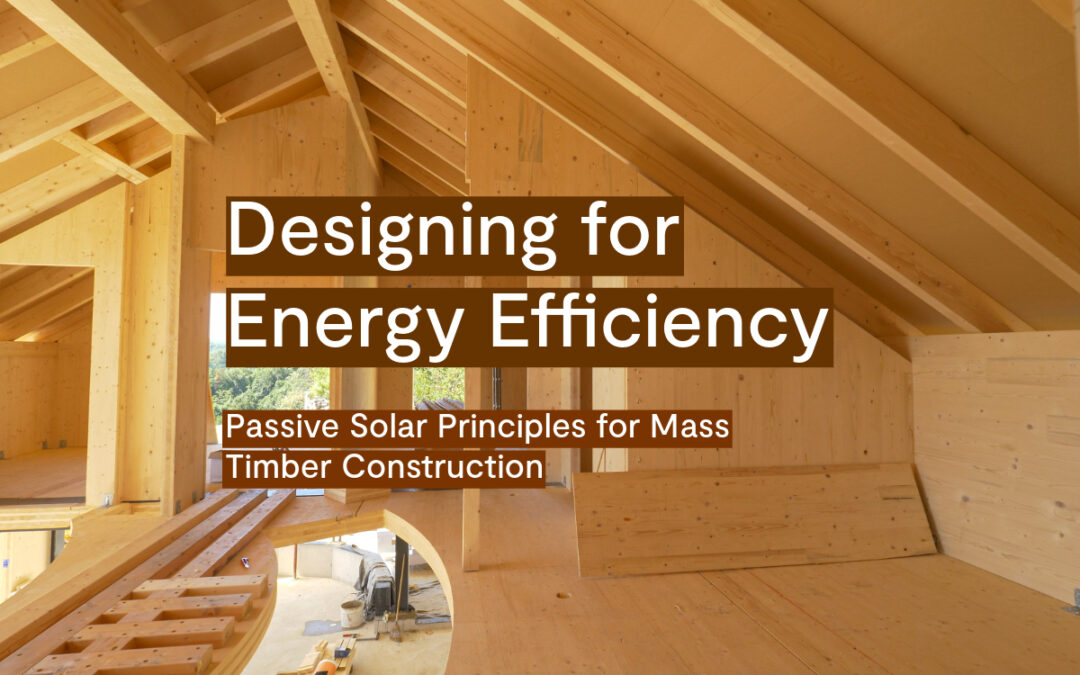Passive solar building design uses the sun’s energy to heat and cool buildings without an active mechanical system. Incorporating these building strategies into your home’s design can help you save on energy costs, create a more sustainable structure, and keep you comfortable all year long.
The Basics of Passive Solar Design
When exposed to the sunlight, your log or mass timber frame home can reflect, transmit, or absorb its energy. The heat produced creates air movement, which follows a predictable pattern that can be harnessed to heat and cool your home.
Passive solar design is especially beneficial when applied to mass timber construction, which is already known for its carbon-sequestering properties and quick renewal rate, making it an excellent green building choice.
Three Core Principles of Passive Solar Design
Passive solar design has three core principles:
- Reducing the heating and cooling demands with planned building placement
- Selecting the right building materials
- Placing windows strategically
The idea is to maximize solar heat gain in the winter and minimize it in the summer to reduce energy consumption and cost.
1. Building Placement
When choosing a building site for your log and timber building, consider the following—
Orientation. The building should face true south to take full advantage of the natural sunlight that enters it. This is especially important in the winter months when the sun is lower in the sky.
Solar Access. Does the site have an unobstructed view of the sun? Are there other buildings or trees that could cast shadows?
Landscape. Is there a slope or other topography that will limit sun exposure? Strategically placing trees, shrubs, and fences can block cold winter winds, affecting efficiency.
Don’t forget to consider local building codes that might impact the design of your log and timber home or building. Check for incentives, too. Both can vary significantly from state to state.

2. Choosing the Right Building Materials
As heating and cooling costs increase, choosing cost-effective solutions when initially designing your home is important. Building materials that can absorb, store, and release thermal energy—like concrete, bricks, timber, or stone—are vital in passive solar design. In mass timber buildings, incorporating thermal mass strategically next to south-facing windows can help regulate indoor temperatures more effectively.
Want to know how thermal mass works and why it’s a crucial part of the building design process? Check out this blog post.
Adapting Passive Solar Principles to Mass Timber
Does passive solar design get the gears turning in your head? Here are a few ways to use passive solar design principles in your next log and timber frame building project.
Integration of Thermal Mass
Cross-laminated timbers (CLTs) and logs don’t require insulation. They’re a solid building material with a high thermal mass performance and have the added benefit of lowering your carbon footprint because you use less concrete and steel in your design. Get inspired by this article from the Passive House Accelerator, A CLT, and Passive House Case Study.
Advanced Framing Techniques
Utilizing advanced framing with logs and timber can reduce thermal bridging and improve insulation, which is essential for passive solar homes to function optimally. Want to learn more about Advanced Framing? Get the Advanced Framing Guide here from the APA.

Aesthetic & Functional Design
According to the Designing with Mass Timber Report by Hugo Corgan, “in a study conducted by Pollinate, a market research company, surveying 1,000 indoor office workers in Australia, workers associate wood with higher levels of wellbeing (+13%), prompting lower absenteeism, higher levels of concentration, and improved mood and daily productivity (+8%). This led to increased worker satisfaction levels, benefiting both the user and the employer. Biophilic design in the workplace has been reported as increasing productivity by up to15%, while improving staff retention rates and overall user favorability.”
Wood, CLT, and timber building materials not only bring the beauty and aesthetic of nature indoors but are also flexible and can be designed to feature large, south-facing windows crucial for passive design solar homes.
Roof Overhangs
Roof overhangs on south windows keep rooms cool and provide shade during summer. Well-placed roof overhangs also help extend the life of any exterior wood finish.
Landscape Design
To reduce unwanted heat gain in the summer, all windows should be shaded by an overhang or awnings, shutters, trellises, or deciduous trees.
What’s Next?
While these concepts have become more mainstream in recent years, builders and homeowners who incorporate mass timber into their structures have understood their benefits for decades, if not centuries.
White architects and builders need to consider these principles from the initial concept and design phase to ensure timber frame structures are functional, sustainable, and energy-efficient for years to come.
The IMTA aims to prove what we know to be true intuitively, which is why scientific testing is imperative so we aren’t left behind in the changing building landscape.
MORE RESOURCES
To dive deeper into passive solar design, visit the sites listed below.
- Treehugger: Mass Timber and Passive House Together at Last
- Mass Timber and Passive House Design by Davis Frame Company
- Passive Solar Energy in Timber Frame Homes
- Energy.gov: Passive Solar Homes

